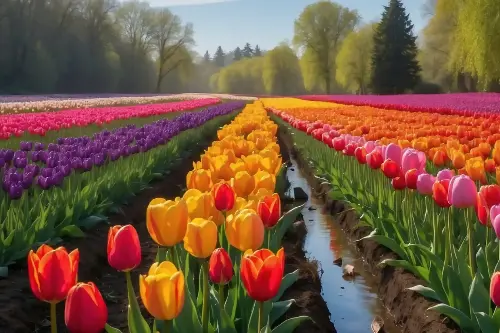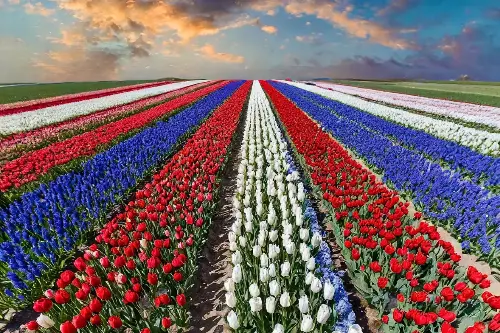Tulip mania is often cited as one of the first recorded speculative bubbles in history, a period during the Dutch Golden Age when contract prices for some bulbs of the recently introduced tulip reached extraordinarily high levels before dramatically collapsing in February 1637. However, beyond this financial frenzy, the tulip remains a culturally and historically significant flower in many parts of the world. Its story is one of beauty, obsession, and symbolism, spanning several centuries and continuing to captivate people today.

The Origins and Journey of the Tulip
Contrary to the common belief that tulips originated in the Netherlands, these flowers are native to a band of territory stretching from Southern Europe to Central Asia, with a significant concentration in the region of what is now Turkey. It was from here, in the 16th century, that tulips found their way to Western Europe, thanks to the efforts of the Holy Roman Empire's ambassador to the Ottoman Empire, Ogier Ghislain de Busbecq.
The flower quickly grew in popularity for its striking colours and unique form, radically different from any other in the European flora of the time. Botanists began cultivating and hybridising the flower, leading to a variety of shapes and colours that had never been seen before.
The Height of Tulip Mania

The tulip's popularity grew steadily into what is now referred to as 'Tulip Mania'. At its peak, some single tulip bulbs were reportedly selling for more than ten times the annual income of a skilled worker – highly reminiscent of the speculative bubbles that occur in financial markets today. It wasn't just the wealthy participating; people from all classes, from craftsmen to nobles, speculatively invested in the tulip market. They hoped to sell their holdings for a fortune later. However, the market collapsed in 1637, leaving many in financial ruin.
A part of the explanation for this fervour lies in the tulip breaking itself. This natural virus, affecting tulips, leads to a 'breaking' of the solid colour of the petals into intricate patterns of streaks and flames. Not understanding this was caused by an infection, growers and investors saw these unique, 'broken' patterns as rare and valuable, driving the speculative prices even higher.
Despite the collapse, the fascination with tulips never completely ended. It shifted from an economic obsession to a more cultural and aesthetic affection.
Symbolic Meanings and Cultural Significance
Universally, the tulip is seen as a symbol of love and affection. However, different colours carry additional meanings. Red tulips are most strongly associated with true love, while purple symbolises royalty. The variegated patterns, once a symbol of utmost wealth and status during the tulip mania period, today are often interpreted to represent beautiful eyes.
In Turkey, the tulip remains a symbol of paradise on earth and has religious significance as well. The era known as the Tulip Era from 1718–1730 is named after the tulip's influence on society at the time, evident in its frequent occurrence in art, fabric, and even architecture.
Tulips Today: Enduring Love for the Flower

Today, tulips are cultivated on a massive scale and are a common sight in gardens across Europe and the world. The Netherlands, recalling its pivotal role in the history of the flower, remains the largest producer and exporter of tulips and tulip bulbs globally. Every year, tourists flock to the Netherlands to witness the vibrant expanses of tulip fields in full bloom, a visually stunning herald of spring.
Festivals celebrating the tulip bloom across countries from the UK, where the Wakefield and North of England Tulip Society hosts an annual show, to Canada, where the Canadian Tulip Festival takes place in Ottawa, a nod to the historic role the flower played in the Canadian-Dutch relationship during World War II.
A Timeless Floral Marvel
From a symbol of love in Persia to a reminder of beauty and rebirth across the world, the tulip remains one of the most beloved flowers in the global garden. Its history testifies to human tendencies towards beauty and speculative greed, but its enduring presence underscores our lasting love for the natural world’s marvels. Whether it is the historical depictions in 17th-century Dutch paintings or the vibrant fields cherished today, the tulip continues to inspire and enchant flower enthusiasts and casual admirers alike.
